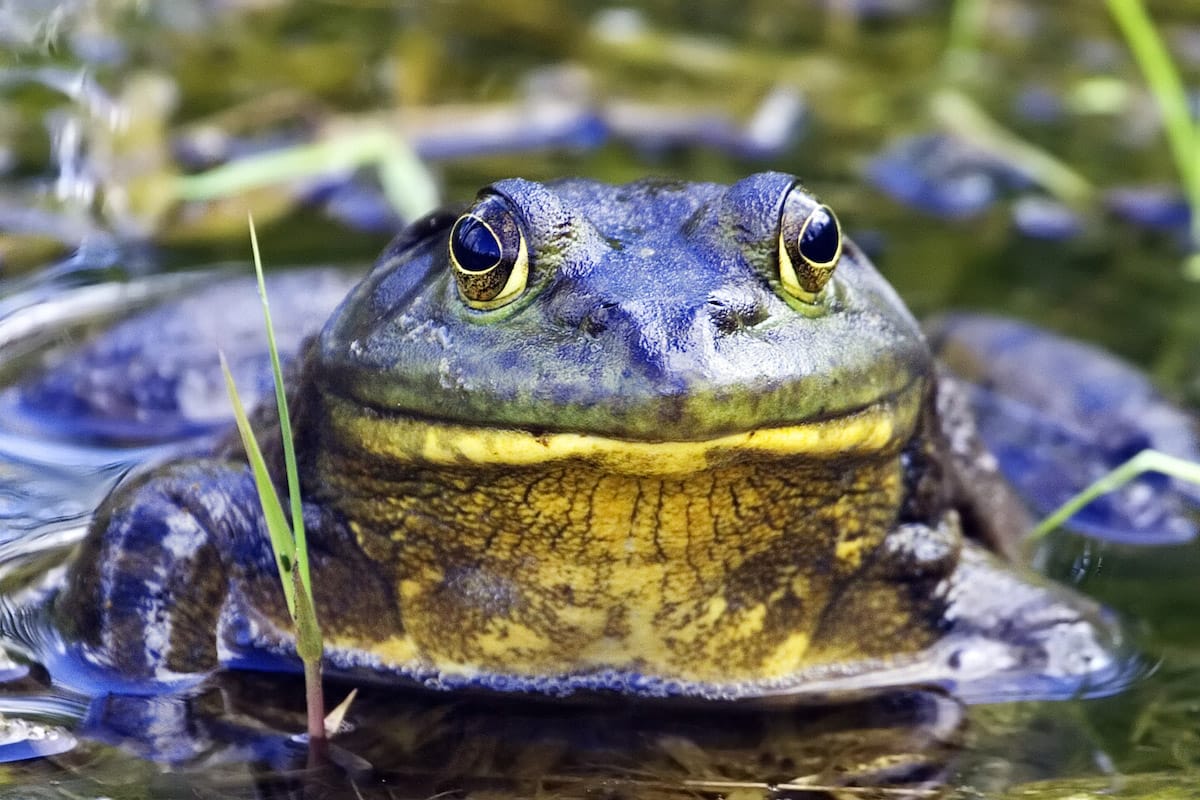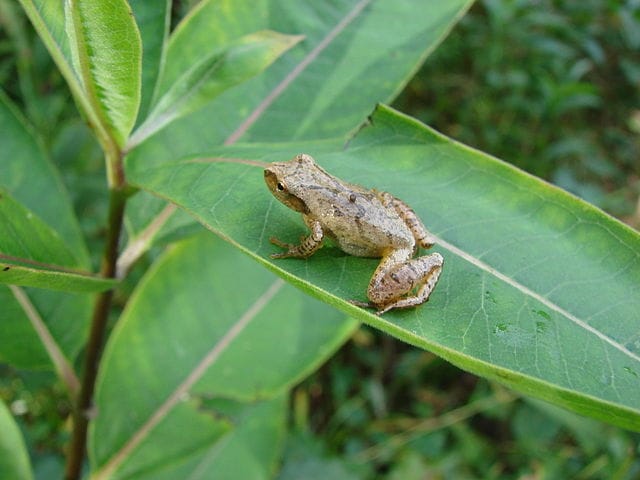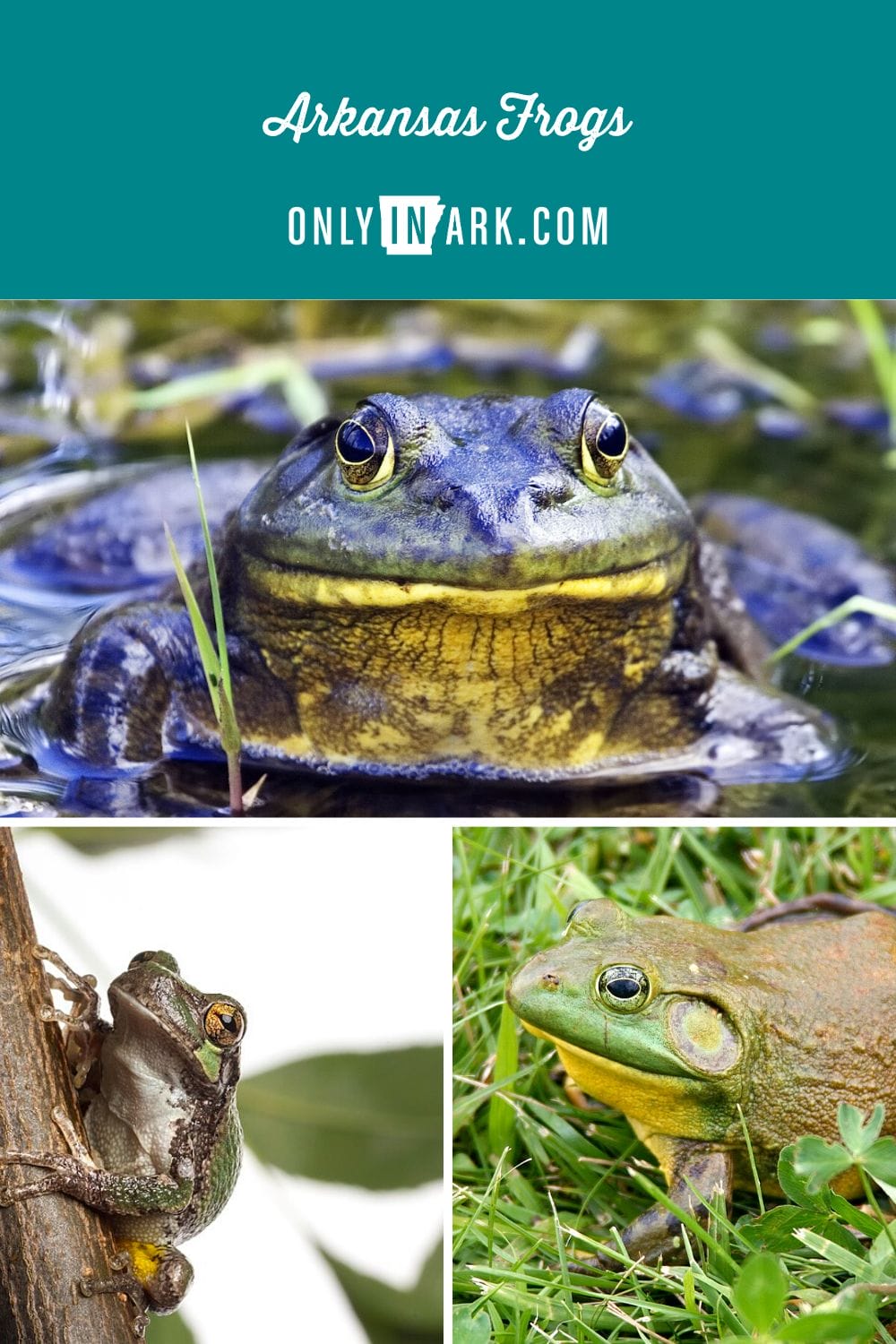

Uh oh...
It appears that you're using a severely outdated version of Safari on Windows. Many features won't work correctly, and functionality can't be guaranteed. Please try viewing this website in Edge, Mozilla, Chrome, or another modern browser. Sorry for any inconvenience this may have caused!
Read More about this safari issue.

On a recent evening, when the temperatures hovered in the 50s overnight, I cracked my bedroom window and was lulled to sleep by a chorus of frogs, one of the many benefits of living in the country.
If you’ve ever heard the sound of Arkansas frogs singing, you know it’s magnificent. There are times when the frogs are so loud you have to raise your voice to speak outside. It’s impressive but often leaves me asking questions. How many frogs are out there? How many kinds of frogs do I hear? Are the frogs early this year?
FrogWatch USA is a citizen science program that invites people to report on the local calls of frogs. I recently attended a Local FrogWatch training as part of Arkansas Master Naturalists and found so many answers. I was able to get answers to many of my questions and questions I didn’t even know I had.

Why Are Frogs Important?
Frogs and toads benefit the environment in many ways, but the one we benefit from the most is insect control. If you think the mosquitoes are bad in the summer, imagine how bad the problem would be if we didn’t have frogs and toads.
Frogs are also excellent indicators of the health of the environment. Frog decline and deformities are an indicator of environmental issues. These animals are an essential part of the food chain by serving as a food source to birds, snakes and other wildlife.
How Many Kinds of Frogs Do We Have In Arkansas?
Arkansas is home to 23 different species of frogs and toads from the tiny spring peeper to the large and loud American bullfrog. You can learn about each of Arkansas’s frogs and toads and listen to a recording of their calls on Arkansas Frogs and Toads.

What is the difference between a frog and a toad?
Though similar, these amphibians are set apart by a few differences.
Frogs:
- Slim bodies and long legs
- Long tongues
- Live close to or in water
- Smooth or slimy skin
Toads:
- Fat bodies and short legs
- Short tongues
- Live on dry land
- Dry and warty skin

Were Arkansas frogs early this year?
This past Christmas, the weather was quite warm, and we heard frogs calling on Christmas day. I was a little surprised, but I learned that several of our frogs start calling in early January. So while frogs calling on Christmas day may be a little unusual, Hearing their croaks in December isn’t unheard of if the weather conditions are right.
Why do frogs and toads call?
You will often hear these amphibians without seeing them. Frogs are elusive and being able to identify their calls is one of the ways researchers can gauge the health of the species.
Frogs have four main types of calls.
- Advertisement call – this is a mating call made by males to attract females.
- Territorial call – Frogs can be territorial, especially during mating season. This call warns away other males that may be encroaching on their space.
- Release call – A female makes this call if she is not interested in a male’s attempt to mate.
- Distress call – Frogs will make this call if they are attached or approached by a predator. It can be an attempt to scare the predator away or a warning to other frogs in the area.

Which frogs are the most common in Arkansas and how do I identify their calls?
American Bullfrog – Bullfrogs may not be the most common frog, but their call is unmistakable. They are our largest frog and can weigh well over a pound. Their sound is a “rum, rum, rrrruumm” and sounds similar to a lightsaber.
Spring peepers: Ahhh. The telltale sign that spring is near. Males can typically be heard from January through May and their sound is a “peep, peep peep.”
Cajun chorus frogs: This frog’s call sounds like someone running a fingernail along a plastic comb. They are most vocal in February through April, and you will hear them mixed in with the spring peepers.

The Future of Frogs
Over 40% of the world’s frogs are threatened or endangered primarily due to habitat loss and human encroachment. Pollution and the use of pesticides can be detrimental to frogs as well as the overhunting of frogs for food or the pet industry. Some diseases can affect frogs and toads, but the majority of the issues they face are human-caused.
Five Tips to Make an Excellent Habitat for Arkansas Frogs and Toads:
- Plant native plants in your yard. Native plants are always the best choice for wildlife and insects.
- Provide hiding places. Bushes, shrubs, rocks and small brush piles all provide shelter for frogs and toads to escape predators, pets and curious children.
- Provide a water source. A small garden pond or a birdbath placed on the ground is beneficial to frogs, insects and other wildlife.
- Don’t use pesticides.
- Become a citizen scientist with FrogWatch USA.
FrogWatch USA and the Arkansas FrogWatch chapters rely on citizens to help collect data about the health of the frog population. By attending a workshop, you can learn about the importance of frogs, wetlands and how to identify frog calls. Once trained, volunteers can begin to record their observations in the online database. This information helps researchers to understand more about frog behaviors without having to be in all the places frogs are found.
If you are interested in learning more about Arkansas frogs or attending a FrogWatch training session, you can connect with one of these local chapters.
Northwest Arkansas FrogWatch USA Chapter, Springdale, Lilia Beattie, liliamaui@aol.com
Northeast Arkansas FrogWatch USA Chapter, Ryan Smith, ryan.smith@arkansas.gov
Little Rock Zoo FrogWatch USA Chapter, Little Rock, Steve Lemp, slemp@littlerock.gov
Cover photo by Allen D. Wils, CC BY-SA 2.5
We do the work.
You check your email.
Sign up for our weekly e-news.
Get stories sent straight to your inbox!













 Leave a Reply
Leave a Reply
I have a picture of a frog from Arkansas, Trying to identify.
[…] love to catch with their hands or nets. On the banks, they might see turtles enjoying a sunny spot, frogs plopping into the water or dragonflies and butterflies flitting about. Kids may spot beavers or […]